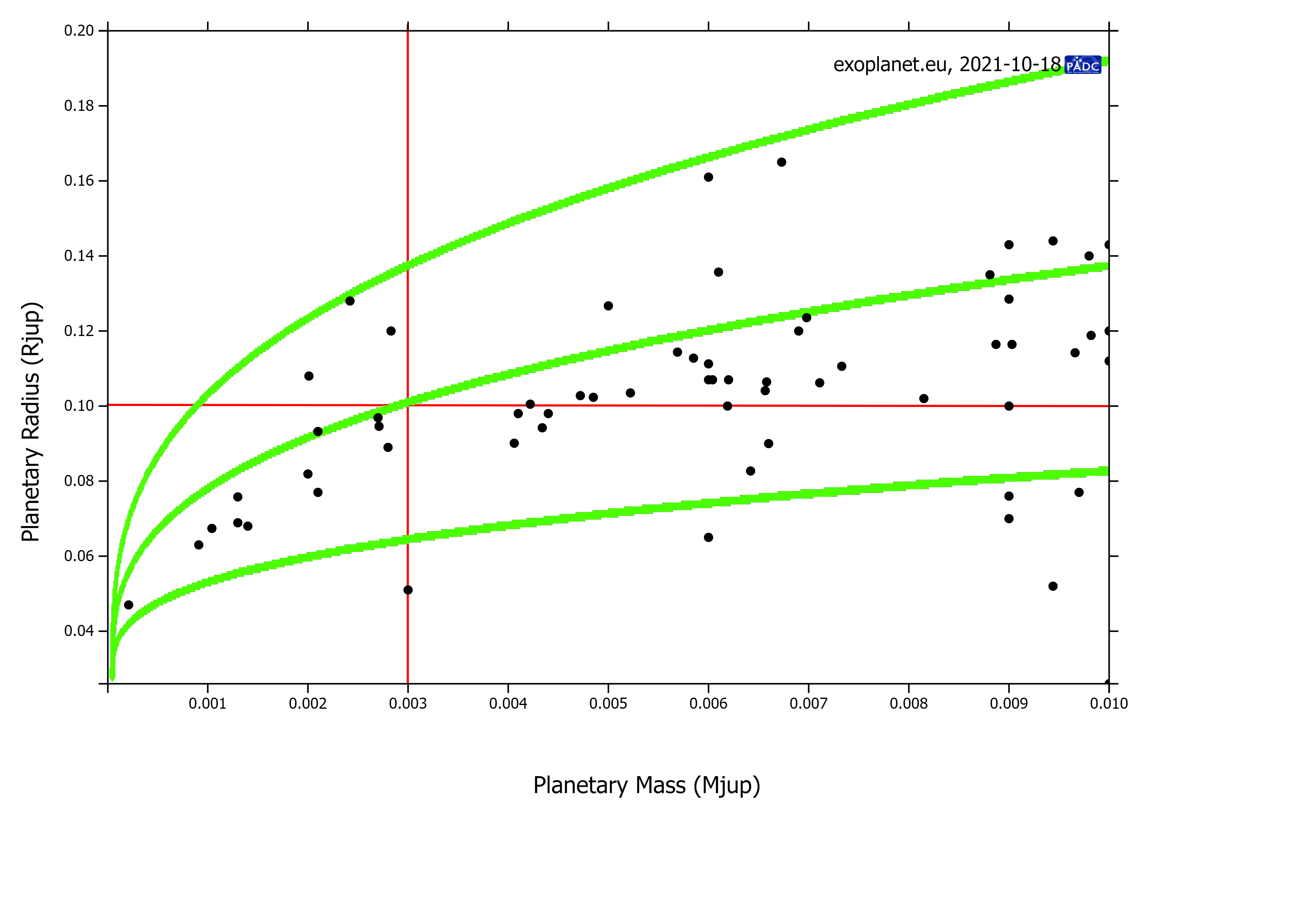By bigger, only the area of the crust is necessarily bigger. Core is necessarily lighter. Everything else could vary. Can it hypothetically exist?
1 Answer
The name for that type of planet are super-earths, or if they are large enough mega-earths
so if you are after a planet that has about the same density as earth then it could definitely exist there are planets that exist that have about that density. if you are after the planet to have the same force of gravity then you can use the equation below.
$$\rho_1r_1=\rho_2r_2$$
where $\rho_1$ is the density of the first planet, which radius $r_1$, and $\rho_2r_2$ are the same but for the second planet, so if you want a larger planet to have the same gravity as earth then the density has to be lower. There are exoplanets that have lower densities than earth but have larger radiuses. below is a plot of mass vs radius, where the black dots are know exoplanets (unfortunately the units are Jupiter mass and radius, so it is not as easy to compare to earth) the earth is at the intersection of the red lines. The green curves are along constant density, where the higher density is the lower curve. The data came from this site
hopefully that helps

